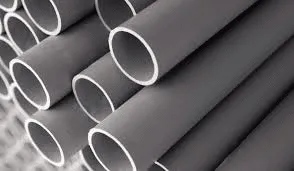PVC, Polyvinyl Chloride, is one of the most widely used plastics in the world. With its excellent performance and diverse applications, it occupies an important position in industrial manufacturing, construction, medical treatment, packaging and other fields. With the continuous advancement of technology, the market size and environmental performance of PVC materials are ushering in new breakthroughs.
Characteristics of PVC
PVC is a chlorine and ethylene-based thermoplastic. Its unique chemical and physical properties make it a cost-effective general-purpose material.
1.High strength and durability
PVC has excellent mechanical properties, wear resistance, impact resistance, and can be used for a long time in a variety of environments.
2.Excellent chemical stability
It has strong resistance to chemicals such as acids, alkalis, salts and oils, and is particularly suitable for use in chemical and industrial environments.
3.Fire retardancy
PVC has a high chlorine content and has natural flame retardant properties. It is widely used in the outer protection of cables and wires and building materials.
4.Easy processing
PVC can be processed into various shapes through extrusion, injection molding, blow molding and other processes to meet diverse needs.
5.Cost-effectiveness
As an economical material, PVC provides cost-effective solutions for many industries

Where is PVC? It may be near you
1.Construction and infrastructure
Pipes and fittings: PVC is used for water supply and drainage pipes, gas pipes, and cable conduits. It has become the preferred material for infrastructure construction due to its corrosion resistance and long life.
Window and door profiles: PVC profiles are widely used in the design of doors and windows of modern buildings due to their heat insulation, weather resistance and aesthetics.
Floor and wall panels: PVC floor and waterproof wall panels are popular in the home decoration market, with the characteristics of easy cleaning and moisture resistance.
2.Medical equipment
PVC is often used to manufacture disposable medical supplies such as blood bags, infusion tubes, oxygen masks, etc. due to its non-toxicity, flexibility and good transparency, meeting high hygiene requirements.
3.Packaging industry
Used in food packaging films, drug blister packaging, etc., it provides excellent protection and ductility to ensure the durability and safety of packaging materials.
4.Electronic and electrical fields
PVC is widely used in the insulation layer and sheath of wires and cables, and its flame retardancy and chemical resistance provide reliable protection for electrical systems.
5.Daily consumer goods
PVC products such as toys, stationery, raincoats, gloves, etc. can be seen everywhere, and their diverse colors and forms meet the needs of daily life
Technological innovation
With the improvement of environmental awareness, the PVC industry is undergoing a green transformation. Sustainable development and technological innovation have become the main driving force for the development of the industry.
Non-toxic plasticizers: The phthalate plasticizers used in traditional PVC products are gradually replaced by environmentally friendly and non-toxic plasticizers, further improving the safety of PVC products.
Recycling technology: Due to its recyclability, PVC is being incorporated into the circular economy system by more companies. Through recycling and reprocessing, PVC waste can be made into new products to reduce the impact on the environment.
New composite materials: High-performance composite PVC materials are becoming a market hotspot. For example, reinforced PVC is used in automobile manufacturing and aerospace fields, showing the new potential of traditional materials.
PVC - the hero hidden in our lives
As a material with a long history but continuous innovation, PVC is adapting to the higher requirements of environmental protection and performance in the new era. With its superior performance and wide application scenarios, PVC not only occupies an important position in the current market, but will also play an irreplaceable role in the future development of the green economy.